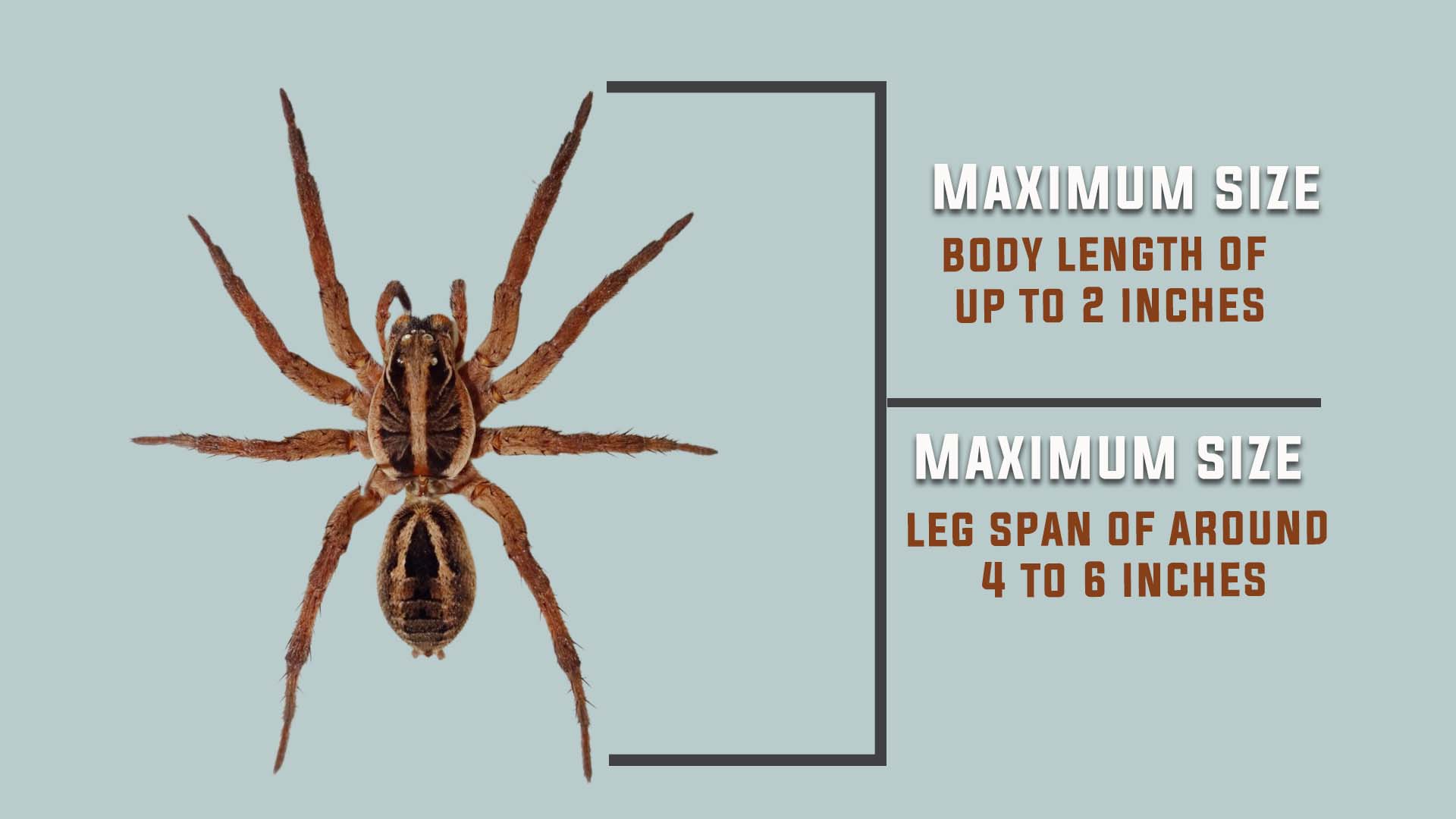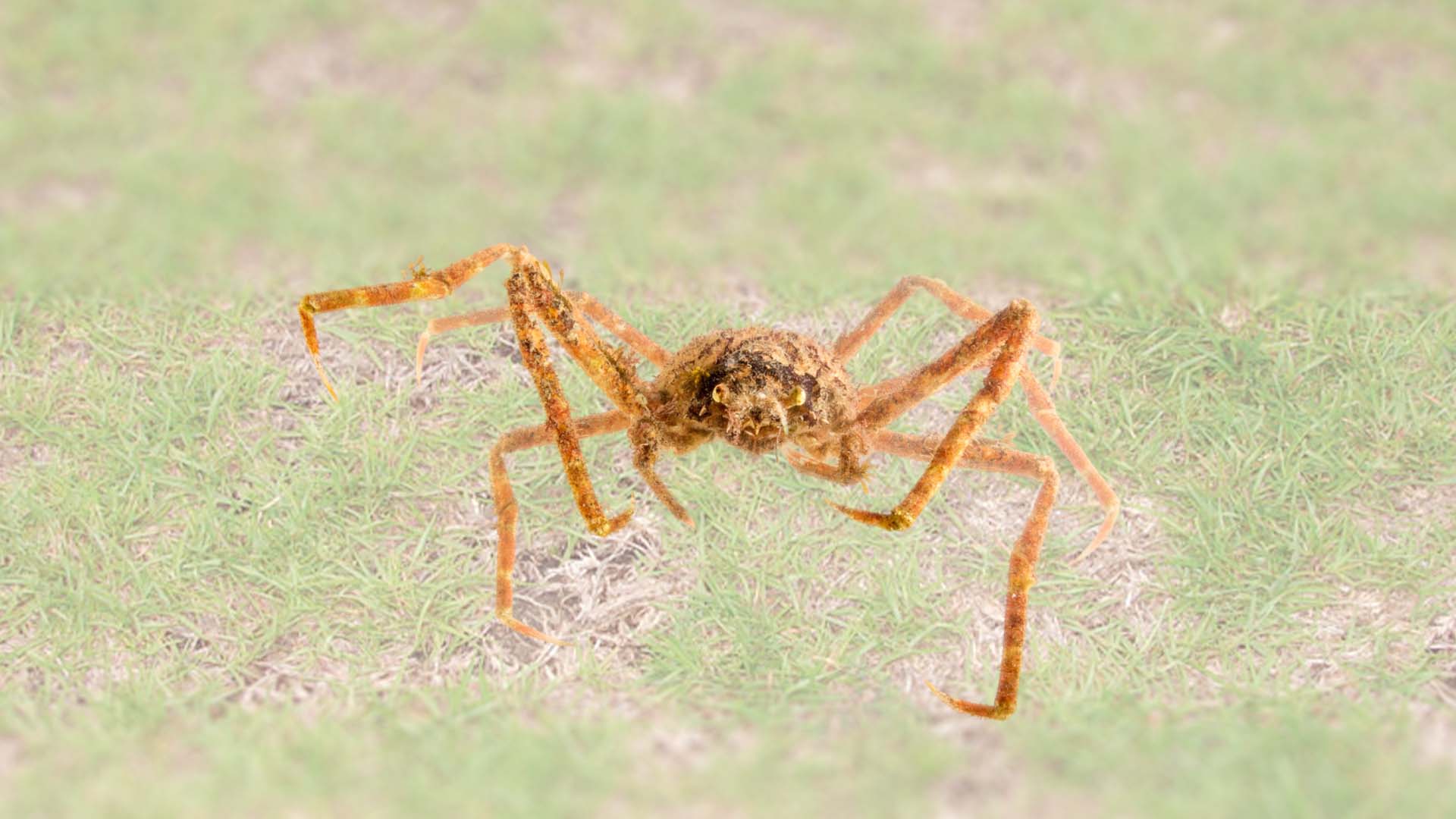Wolf spiders are a diverse and widespread group of arachnids known for their distinctive hunting behavior and unique appearance. One intriguing aspect of these spiders is their size variation, with some species growing remarkably large.
In this article, we will discuss the growth patterns, and factors influencing their size and spotlighting some of the largest wolf spider species.
How Big Can a Wolf Spider Get?
Wolf spiders can vary in size depending on the species, but the largest ones can have a body length of up to 2 inches (5 centimeters) and a leg span of around 4 to 6 inches (10 to 16 centimeters). These spiders are robust and often known for their impressive hunting abilities. Their size allows them to capture a diverse range of prey in their habitat.
Growth and Molting
Like all arachnids, wolf spiders undergo a process called molting to grow. Molting involves shedding their exoskeleton, which has become too restrictive due to their increasing size.
During this process, the spider’s body is vulnerable, and the new exoskeleton is soft. The spider hides away during this time, as it is more susceptible to predators. Once the new exoskeleton hardens, the spider is ready to resume hunting and other activities.
The frequency of molting and the growth rate can vary among different wolf spider species. Factors such as temperature, humidity, and food availability play significant roles in determining how often a wolf spider will molt and how quickly it will grow.
Adequate nutrition is particularly crucial during the growth phase, as spiders need to consume enough prey to support their increased size and energy requirements.
Size Variation in Wolf Spiders

Wolf spiders exhibit a wide range of sizes, from relatively small individuals to giants that can evoke surprise and awe. While many species fall within the smaller size range, there are some notable exceptions that have garnered attention due to their impressive size.
| Measurement | Average Size | Units |
|---|---|---|
| Leg Length | 1 – 4 inches | Inches |
| Body Length | 0.4 – 2 inches | Inches |
| Heat Sensitivity | Varied | N/A |
Giant Wolf Spider Species
Hogna ingens (Formerly Lycosa ingens): Native to the deserts of the southwestern United States and Mexico, Hogna ingens holds the title for one of the largest wolf spiders. With a leg span of up to 4 to 6 inches (10 to 15 cm), this species can appear formidable. Despite its size, Hogna ingens relies on its exceptional speed and hunting skills to capture its prey.
Hogna carolinensis: Also known as the Carolina wolf spider, this species can be found in the southeastern United States. While not as large as Hogna ingens, it can still reach a leg span of around 2 to 3 inches (5 to 7.5 cm). Its robust build and distinct markings make it a recognizable species in its habitat.
Lycosa tarantula: This species, often simply referred to as the tarantula wolf spider, inhabits parts of Europe and Asia. While not as massive as some other wolf spider species, Lycosa tarantula can still reach a leg span of about 1 to 2 inches (2.5 to 5 cm). Its name is a reminder of the historical association between wolf spiders and tarantulas, which were mistakenly thought to cause a dance-like frenzy known as “tarantism.”
Here’s a simple table showcasing the size range of different wolf spider species:
| Species | Body Length Range | Leg Span Range |
|---|---|---|
| Hogna carolinensis | 0.4 – 1 inch | 1 – 2.5 inches |
| Lycosa tarantula | 0.8 – 2 inches | 2 – 4 inches |
| Lycosa erythrognatha | 0.5 – 1.6 inches | 1.5 – 3.5 inches |
| Lycosa godeffroyi | 0.5 – 1.2 inches | 1.5 – 2.8 inches |
| Lycosa spadix | 0.4 – 1.4 inches | 1 – 3 inches |
| Hogna lenta | 0.6 – 1.2 inches | 1.5 – 3 inches |
Factors Influencing Size
Several factors contribute to the size of wolf spiders, including genetics, habitat conditions, and prey availability. In environments with abundant food sources, wolf spiders may grow larger as they have the necessary resources to support their development. Additionally, warm climates often result in larger spider sizes due to increased metabolic rates and longer growth seasons.
Predator-Prey Relationships and Adaptations
The size of a wolf spider is also influenced by its role within the local ecosystem. Wolf spiders are both predators and prey, creating intricate food webs. Larger wolf spider species may prey upon smaller ones, leading to size variations within a single population. In turn, these spiders may be hunted by birds, reptiles, and other predators, which can influence their size as they evolve various adaptations to avoid being caught.
Conclusion
Wolf spiders exhibit a fascinating range of sizes within the Lycosidae family. From the impressive giants like Hogna ingens to the more modest-sized species, these arachnids have adapted their size to various ecological niches and environmental conditions. Growth patterns, molting, genetics, and predator-prey relationships all contribute to the intricate dance of size variation among wolf spiders.






